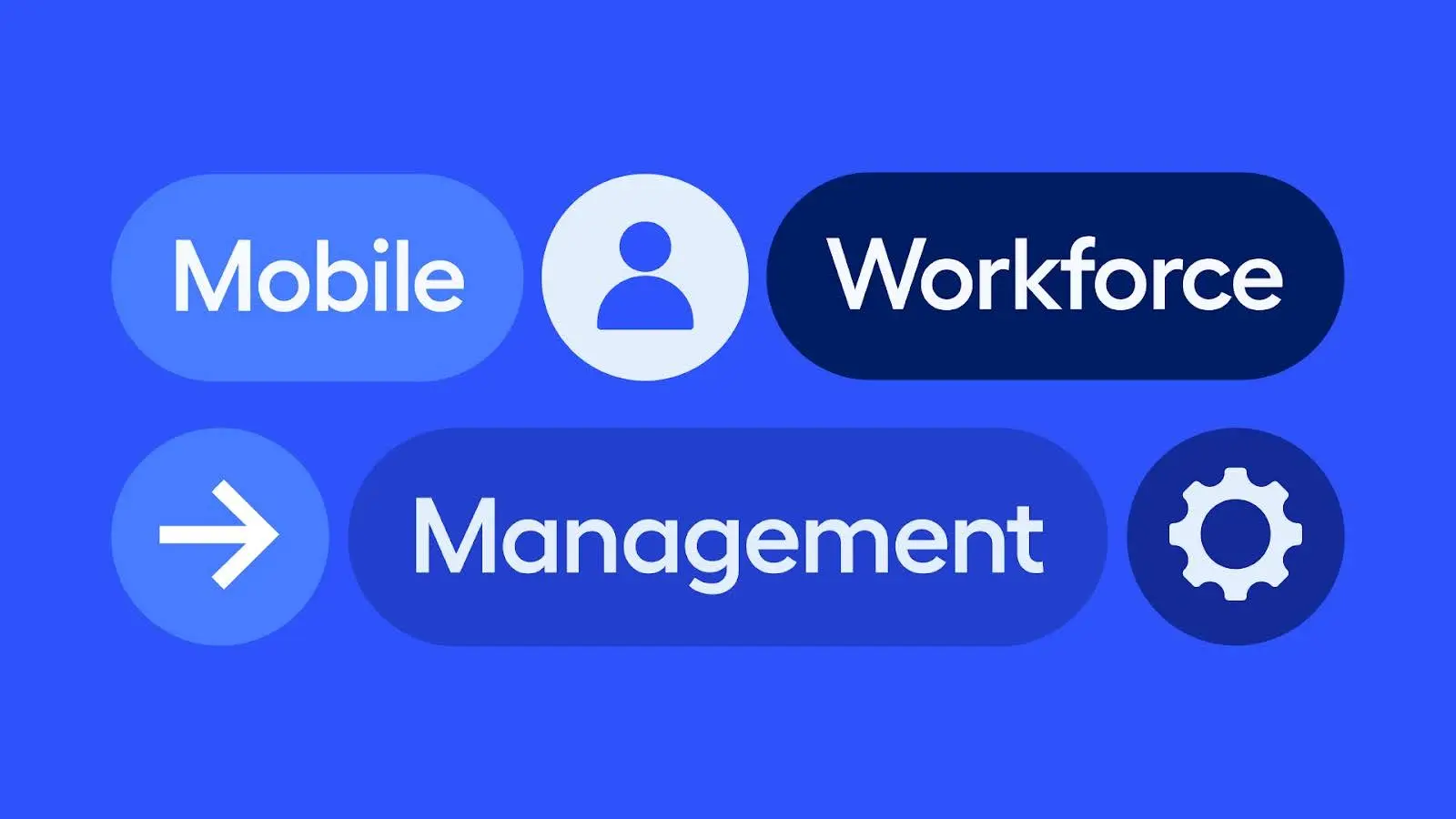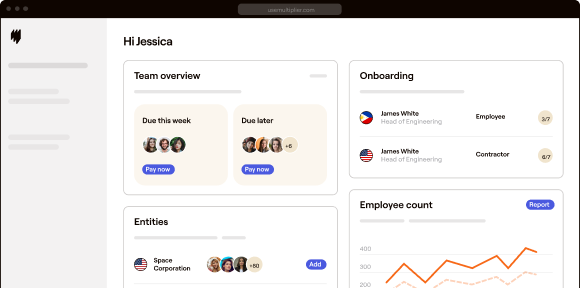As businesses increasingly embrace mobile workforces in every organizational function, maintaining productivity and operational efficiency arise as key challenges. This challenge is more prominent in sectors like field services, logistics, and healthcare, where managing dispersed teams demands real-time coordination and agile communication.
Mobile workforce management platforms enable just that by providing essential solutions that enable efficient task assignment, location tracking, and instant feedback. These systems streamline workflows, automate scheduling, and ensure seamless communication between employees and management, allowing businesses to manage evolving demands. By leveraging these capabilities, companies can reduce operational bottlenecks, improve team productivity, and deliver superior service, ultimately driving both efficiency and customer satisfaction.
In this article, we will explore how mobile workforce management solutions work, provide tips for selecting the best platform, and offer strategies for successfully scaling your business with these systems.
The power of mobile workforce management across industries
Mobile workforce management platforms are game-changers for industries that rely on mobility. Whether it’s construction, logistics, healthcare, field services, or retail, these platforms provide real-time visibility, smart scheduling, and boost efficiency—all from one place. They cut costs, streamline operations, and help you manage teams with ease. From route planning in logistics to scheduling mobile care teams in healthcare, the benefits are the same: smoother operations, fewer headaches, and better results. Simplify your workforce management and keep your teams running like clockwork, no matter where they are.
But how do you go about choosing the right mobile workforce management software? Let’s explore that next.
How to choose the right mobile workforce management software
Choosing the right mobile workforce management platform isn’t just about features—it’s about ensuring seamless integration with your current systems and workflows.
Here are some of the key factors worth considering when selecting mobile workforce management software:
1. Scalability and flexibility
As your organization grows, so will the size and needs of your mobile workforce. Choose a platform that scales with you—offering flexibility in adding new users, managing multiple locations, and accommodating evolving operational needs.
2. Integration capabilities
Ensure the platform integrates easily with your existing systems like customer relationship management (CRM), enterprise resource planning (ERP), or payroll tools. A platform that works harmoniously with your current systems will streamline data flow and eliminate manual tasks, saving time and reducing errors.
3. User-friendly interface
The software should be intuitive for your team to use. A steep learning curve can delay implementation and lower employee engagement. Choose a platform with a clean interface that’s easy to navigate, ensuring quick adoption across teams.
4. Real-time tracking and data analytics
Real-time visibility into your employees activities, locations, and progress is key to ensuring efficiency. Explore platforms that offer real-time tracking, allowing you to respond to any issues promptly. Additionally, robust analytics can provide valuable insights for long-term strategy.
By focusing on these key factors, enterprises can effectively scale their mobile workforce management solutions to drive efficiency and streamline operations.
Enterprise mobile workforce solutions: Scaling for growth
Managing a mobile workforce across regions presents significant challenges especially for large enterprises. Enterprise-level workforce management systems provide the customization and integration needed to address these complexities effectively.
1. Customizing mobile workforce management systems for enterprises
Every enterprise has unique operational requirements, and your mobile workforce management system should be tailored to meet them. Whether it’s configuring workflows, customizing dashboards, or setting up role-based access for various team members, customization ensures the platform is aligned with your enterprise’s specific needs.
2. Integrating mobile workforce management with existing enterprise systems
For larger enterprises, smooth integration with existing systems like CRM, ERP, and HR management is crucial. The right platform will offer open APIs and seamless data exchange, ensuring that information flows flawlessly across all departments. This integration boosts productivity and creates a unified system for tracking performance metrics, payroll, and client interactions.
3. Addressing security concerns and compliance in mobile workforce management
As enterprises expand, security becomes a top priority, especially when managing a mobile workforce. Platforms must include stringent security protocols, such as encrypted data storage, multi-factor authentication, and user access controls. Additionally, enterprises need to comply with regional labor laws and data privacy regulations, so choose platforms that help maintain compliance across different regions.
4. Enterprise-level mobile workforce solutions
Examples of enterprise-grade mobile workforce platforms include tools that support large-scale operations while maintaining flexibility and scalability. These platforms often include features like dynamic scheduling, geo-fencing, AI-driven route optimization, and robust reporting systems that make managing thousands of employees across diverse locations manageable.
Integrating HR functions into your mobile workforce management strategy
No doubt, mobile workforce management platforms give you the power to improve operational efficiency through scheduling, task management, and real-time coordination. However, an often-overlooked aspect is the integration of HR functions.
Managing a mobile workforce goes beyond just operational tasks—Your HR team will also have to handle payroll, benefits, and HR compliance. And this isn’t only essential for ensuring employee satisfaction but also for maintaining legal and regulatory compliance and sustaining long-term business growth.
Also, mobile workers are not limited to full-time employees. Enterprises and small businesses worldwide manage contractors, part-timers, and freelancers as a part of their mobile workforce. Ensuring compliance with labor laws—such as managing employee classifications, tracking mandatory breaks, and adhering to local wage regulations—then become crucial for businesses operating in multiple regions or managing a distributed workforce.
What can businesses do?
By integrating payroll, benefits, and compliance, businesses can create a unified, efficient system that enhances employee satisfaction, reduces administrative burden, and ensures legal adherence.
That’s precisely where a B2B SaaS software like Multiplier comes into the picture!
Multiplier’s global employment platform includes several workforce management tools designed to make your HR teams function well and without stress. Using one platform, you can handle crucial yet tedious tasks such as payroll, hiring and onboarding, paying freelancers, and compliance.
Ready to streamline your HR operations and maximize efficiency? Explore Multiplier’s top workforce management tools and transform the way you manage your global teams today.
FAQ
1. How can mobile workforce management software improve productivity?
Mobile workforce management software enhances productivity by offering real-time tracking, optimizing employee schedules, and automating administrative tasks. With better visibility into operations, companies can resolve issues faster and ensure that employees are working efficiently, no matter where they are located.
2. What features should I look for in mobile workforce management tools?
Look for features like real-time GPS tracking, integration with existing systems (CRM, ERP), dynamic scheduling, user-friendly interfaces, and data analytics tools. These features ensure you can manage your mobile workforce efficiently while gaining actionable insights to improve performance.
3. How much does mobile workforce management software cost?
Pricing varies depending on the platform’s features, number of users, and scalability. While some platforms charge per user, others offer enterprise packages for larger teams. It’s essential to balance cost with the platform’s ability to deliver the necessary features for your organization.
4. What are the benefits of using mobile workforce management systems?
Benefits include improved operational efficiency, real-time visibility into field operations, enhanced employee productivity, and better compliance with labor laws. These systems help reduce manual errors, improve scheduling, and provide valuable data for long-term decision-making.
5. What is the difference between field service management and mobile workforce management?
While both involve managing teams in the field, field service management typically focuses on specific industries like maintenance, utilities, or healthcare. Mobile workforce management, on the other hand, covers a broader range of industries and focuses on managing a remote or mobile workforce, which could include sales, logistics, or customer service teams.







